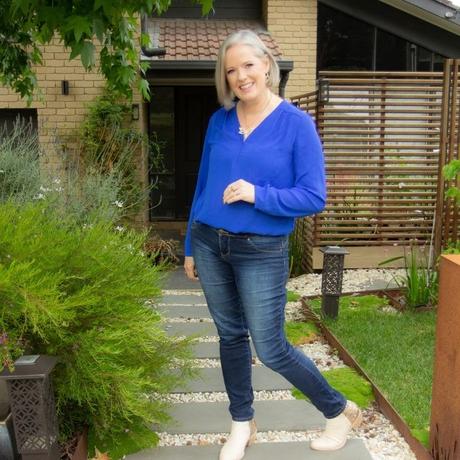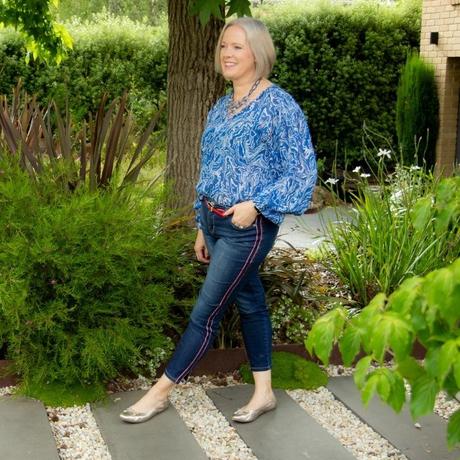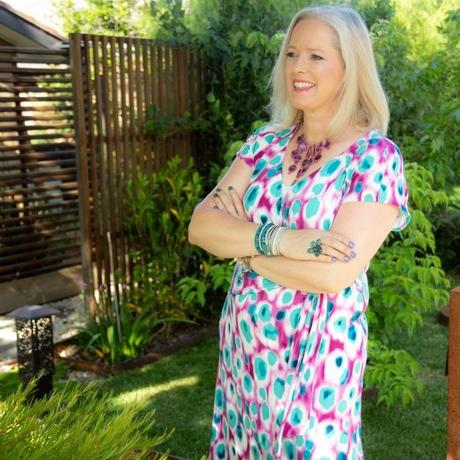We all know the feeling of going into our closet and feeling like we have nothing to wear. But there are ways to add more interest and unique colour combinations to your outfits without going shopping, just using a little creativity. Open your closet and pull out your go-to's, look at different ways you can pair things with each other. Think unexpected pattern pairings, colours you never thought could go together, maybe something you save only for super dressy occasions pairs with your most casual item? Test things out and see what new outfits you come up with.
Watch the Video on How to Include More Interest and Unique Colour Combinations in your Outfits
Add Accessories
Accessories are key to styling up your outfit and adding a little touch of uniqueness.
Whether it's a scarf, necklace, stack of bracelets, belt, even a cocktail ring can be fun ways of adding some style to your otherwise bland outfit. Find items that are a little bit unusual rather than standard accessories.
Adding more than one accessory at the same time - a cluster of brooches, a stack of rings, and several necklaces.
When wearing jewellery, particularly small and more delicate pieces, don't be afraid to stack them together. Your accessories collection will be different from anybody else and so even if somebody else owns the same thing, it's going to be more unique because you have put it together in a way that suits you and your personality.
Many people remember Coco Chanel's quote of " Before you leave the house, take something off" and they get scared of wearing too much. But when you look at photos of her, she's got layers of jewellery on. Most people wear too little jewellery, rather than too much. They are scared of getting it wrong.
Colour Combinations
It's very easy if you have a colour wheel to figure out some really attractive colour combinations.
Monochromatic - shades of the same colour. Many people think this means the exact same colour head to toe, but in fact it doesn't, it means one colour - as in shades of one colour, so you can have light and dark versions of a colour.
Analogous - 2-3 colours next to each other on the colour wheel. Examples: blues with purples, or blues with greens, or yellows with greens or yellows with oranges etc.
Triadic - draw an equilateral triangle on the colour wheel and put those colours together - Blue, Red and Yellow, are an example of this. If 3 colours are too much at the one time for you, why not try 2 of the 3 colours with a neutral such as red and blue with white, yellow and blue with brown, purple and green with grey, orange and purple with brown.
In my outfit below, I'm using 2 parts of the triad (blue and red) with white as a neutral (also neutral navy denim too). You can see that the proportion of the additional colour doesn't need to be in large swathes! It can just be an accent.

Complementary - colours opposite each other on the colour wheel. Pink and Green, Orange and Blue, Purple and Yellow are all examples of complementary colours. In this example below, I'm wearing a pink and green spot dress which is complementary in its colours.

You can find colour wheels online that actually allows you to create colour combinations if you don't have to have a physical one. Hint - Make sure you an online colour wheel that uses a traditional artist's colour wheel which defines the primary colours as red yellow and blue. Web designers have a different colour wheel that allows for the way the pixels in a monitor or TV screen emit light. In this colour wheel, the primary colours are red, green and blue.
Colour Proportions
Balance and proportion are key elements when styling an outfit.
Colour blocking is a popular design trend that involves mixing solid colours in large proportions to create a striking statement.
60% + 30% + 10 % proportion formula is considered to be a timeless decorating rule that can be used to mix different colours in a balanced way in a room that call also be applied to using colour in your outfits.
If you're unsure of how to put colours together, why not use an existing patterned item in your wardrobe to create interesting colour combinations. From scarves to skirts, take the colours in a patterned garment and repeat them in other garments or your accessories. This makes it so easy as the guesswork has been taken away and you know that if the colours in the pattern look good together, repeating one or more of them in the rest of your outfit will be harmonious as you don't have to worry about the intensity or undertone which have been predetermined by the existing pattern.
Mixing patterns is another way to add more uniqueness and interest to your outfit as well as introduce different colour combinations to your outfits. If you like the idea of mixing prints and patterns but are a little hesitant, I'll walk you through some ideas of how to do it simply and easily here.
If you really want to push yourself to try new outfit combinations, this is exactly what I designed my Evolve Your Style 31 day challenge to do. Not only does it give you a framework to assess your style each day, but also a mini-challenge - nothing too hard, but a little nudge each day to get out of your standard style rut and within a few weeks your style will have evolved into something better!
Further Reading
Using the 60/30/10 Rule to Create Fabulous Colour Combinations in Your Outfits
How to Use a Colour Wheel to Create Outfits
11 Genius Ways to Mix Prints and Patterns Like a Pro


